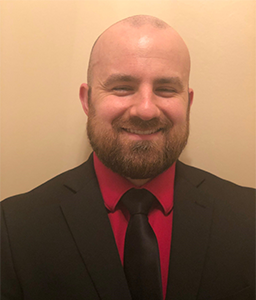Video App for Directly Observed Therapy (DOT)
New app may improve directly observed therapy adherence for TB, opioid abuse treatment, and diabetes.

Sebastian Seiguer, MBA

Jonathan Keyser, Pharm D

For some conditions and with some patients, the most effective way to ensure medication adherence is with directly observed therapy (DOT), where patients meet with a healthcare professional who watches them take the medication. DOT is used widely in opioid addiction clinics and in treating tuberculosis, where poor adherence can lead to the development of resistant strains. The disadvantage to DOT is that patients must travel, usually daily, to the treatment site to be observed.
Now, a phone app that uses the video capability of smart phones may provide a better means of providing DOT. The app is both called ‘emocha’ and is from the company emocha, a Baltimore-based mobile health platform that provides a range of applications that help collect and analyze patient data and engage the patient.
The emocha app allows a patient to take a medication whenever they need to or wherever it is convenient for them, rather than have to go to a clinic to take it, says Sebastian Seiguer, MBA, CEO of emocha Mobile Health. The app allows patients to video themselves taking the medication and send that video to a clinic or healthcare professional for viewing at a later time. With pills or capsules, patients must also video themselves swallowing water from a clear container after the pill to prove that they have swallowed the medication.
This asynchronous viewing allows healthcare professionals to verify that the patient took the medication by viewing the video later in the day or the next day. If a patient does not submit a video within a certain time, the app alerts the healthcare professional. “We have a sophisticated system for alerting providers as to what they need to be looking at, and who they should be responding to,” Seiguer says.
It also uploads the video at a later time if the patient is in an area with poor connectivity, he adds.
Patients can also use the app to ask questions, report side effects, or note any problems they are having with their condition or medication regimen. The company suggests that the videos be viewed within 24 hours of their submission, “because whatever response the patient gets is more understandable and more relevant if it has immediacy,” Seiguer tells Drug Topics.
The system is easy to use, says Jonathan Keyser, Pharm D, clinical pharmacist at University of Maryland Health Partners in Lutherville, MD. Keyser is enrolling patients with type 2 diabetes who take oral medications into a program. The hope is that DOT can improve adherence rates in diabetes, which typically hover around 50% on a national average, he says. The goal is to raise adherence rates into the 80% range, he notes. Total Health Care, a federally qualified health center (FQHC) in the Baltimore area will provide additional support and clinical resources to patients throughout the program. As an added encouragement, patients who achieve a minimum medication adherence by regularly uploading videos to emocha Mobile Health’s servers will receive a $100 gift card.
Before he started enrolling patients, Keyser tested the app for a few days. “I actually got to use the app just to see how easy it is to utilize the product. It’s fairly easy to use,” he says. He tested it over the weekend he was married. “I got to take the video at my wedding. My wife yelled at me.” He used M&Ms to test the system, he adds. “If I messed up once the video is complete, it would ask if I wanted to take another video. So let’s say I dropped the pill or something like that, it would let me restart before I submitted my official video.”
In the diabetes program, patients are walked through the process of how to log into the system and how to make the video, Keyser tells Drug Topics. “I haven’t heard any complaints or issues with the technology.”
The emocha app is also being tested at Johns Hopkins University School of Medicine to study the combination of a video DOT system and financial incentives in treating opioid use disorder. It is also being studied as an aid to adherence with patients with Hepatitis C who take Harvoni.